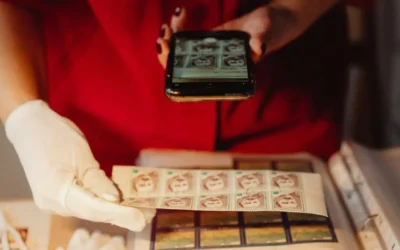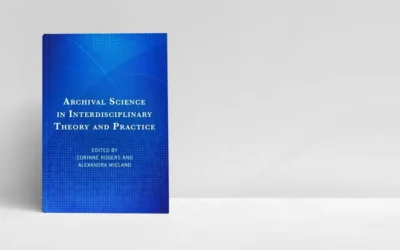Spotlight on Archival Labor
Margot Note
One of my passions within my profession is finding ways to demonstrate the value—both in the literal and figurative sense—of archival labor. This, understandably, has been a challenge because few people understand what archivists do.
Our work is a black box, in which materials flow in and materials flow out, with our work being invisible. The truth is that some decision-makers within our organizations may mistake our work as just preserving old, dusty things and view our departments as places to spend money without adding value.
Recognition for Our Work
I remember visiting the Harry Ransom Center at the University of Texas in Austin and seeing a placard on the wall with a few lines recognizing archivists’ work. The gesture touched me because I had not seen anything similar elsewhere. Users of archives and patrons of historical centers do not realize the significant amount of education, skills, and experience that archivists need to perform to provide intellectual and physical control of acquisitions. The materials, their creators, and high-profile directors overshadow archivists.
Demonstrating Value
In my consulting practice, I have found that people are captivated by the work I do—once I explain what it is! Archival work has a perception of romance and mystery. In a field where so much is misunderstood, having the ability to showcase our work and demonstrate its value is needed.
Demonstrating archival value can be done in a variety of ways. Providing a backstage view of archival work opens our day-to-day activities. Consider blog posts, social media posts, or videos walking through various stages of processing. When archivists reach out to discuss their work, it provides an opportunity to discuss our decision-making processes. It displays our vulnerability as we step away from the façade of neutrality and talk about the very human choices we make, especially when staff and budgetary shortages constrain us.
Touring the Archives
Another way to highlight archival labor is to give tours of the archives. For example, before the pandemic, my local archival professional development organization hosted Archives Week during National Archives Month where organizations provided open houses.
During the 2019 Biennial Audio-Visual Archival Summer School (BAVASS), hosted by the Indiana University Libraries Moving Image Archive at Indiana University, Bloomington, I had the opportunity to tour the massive climate-controlled warehouses of books and archival materials, rode a cherry picker, and browsed through the aisles of manuscript boxes, costume archives, and the collections of the Kinsey Institute—quite an eye-opening experience! The visual of the enormity of their holdings is forever etched in my mind, and I understand this field. However, I cannot imagine the impact of such a tour on current and potential donors—emphasizing the undertaking they are funding. Whether the tour is in-person or remote, it provides a unique peek of the archives and the processes performed. Due to safety and security concerns, leading patrons through the depths of your stacks may not be possible. However, delivering even a limited view of your holdings can inform interested users, donors, and stakeholders.
Informed by Digital Humanities
Although an essential part of preserving history, archivists are often not recognized for the work they do. For example, the presence of archivists frequently remains undocumented in finding aids and uncited in research. For example, if archivists are thanked in a book or article, it is usually the reference archivist acknowledged for the help they provided. Likewise, the many hands that organized and made accessible paper-based, digitized, and born-digital collections remained unacknowledged because their work is not visible beyond a line in a finding aid, if they are lucky. Following the established practice in the digital humanities to foreground all collaborators’ contributions, archival repositories should document all the people involved in shaping a collection that will inform later academic inquiry. We owe it to ourselves and our profession to shine a light on our labor.
Margot Note
Margot Note, archivist, consultant, and Lucidea Press author is a regular blogger, and popular webinar presenter for Lucidea, provider of ArchivEra, archival collections management software for today’s challenges and tomorrow’s opportunities. Read more of Margot’s posts here. And stay tuned for the release of her upcoming book, The Digital Decisive Moment: Transformative Digitization Practices—the next title in our Lucidea’s Lens series.
Similar Posts
Ensuring Long-Term Access to Digital Archives
Long-term preservation is essential to ensure digital archives remain accessible and usable.
5 Best Practices for Personal Digital Archiving
Archivists have developed best practices for organizing and maintaining personal digital archives, safeguarding digital legacies for future generations.
Interview with the Editors: Wieland and Rogers on Interdisciplinary Archival Science
Alexandra Wieland and Corinne Rogers co-edited Archival Science in Interdisciplinary Theory and Practice. My interview with them is below.
The Importance of Personal Digital Archiving (Plus Steps to Get Started)
Archivists often help individuals manage and preserve digital files of personal significance.




Leave a Comment
Comments are reviewed and must adhere to our comments policy.
0 Comments